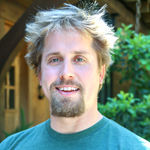
Personalized learning can take many forms, and more effective personalization does not always mean more technology. The promise of blended and personalized learning is that educators can better meet the individual needs of each of their students, as opposed to providing a single approach to instruction and having students adapt to that. Technology can often help meet more students’ needs as it can perform several actions quickly and easily (e.g., assessments and grading). By offloading some of these tasks to technology, educators have more time to focus on high-value interactions with their students (like small-group instruction). Figuring out where technology can improve learning is not always clear cut, and schools must determine what works best for their students and continue to improve upon their findings. Roots Elementary in Denver, CO, for example, recently reduced the role technology played in teaching and learning to create more personalized instruction for its students.
My first visit to Roots was in 2016, and I was impressed with what I saw. It was a K-1 school at the time, and my heart couldn’t help but melt as I watched the building fill up with many students who were the same size as their backpacks. The school was customized for a lab rotation approach, one where many students spent much of their time in a large room, switching between stations based on their learning needs. Every student had an iPad that told them where they needed to be and allowed them to check in at their station so educators knew they were in the right place. Roots’ leaders created custom technology to make this work for young students, optimizing their experience with color coding and an easy-to-use interface. Combining this with a variety of education software programs, Roots was able to better understand and meet the learning needs of a large number of their students. While students were seeing strong improvements in their academic success, educators and leaders at Roots noticed an important need that was not being met.
Many students at Roots Elementary have experienced trauma, and while the approach the school took created a more efficient learning environment, educators noticed the environment was not meeting the social and emotional needs of their students. After a great deal of reflection, discussions with students and their families, and expert-led trainings, Roots shifted its approach to better meet the complex needs of all students. This change in approach actually meant relying on technology less, but no doubt resulted in an increase in personalization. Many often conflate technology with personalization, but Roots is a great example of how more technology isn’t a requirement for creating a more personalized learning experience. Some ways to increase personalization without technology include:
- Changing the Physical Space: In the lab rotation model, there was a large open room where students moved from station to station and were pulled into smaller rooms for more specialized needs. This resulted in an environment with a great deal of stimuli, and many of their students did not respond well to this. Their new approach introduced barriers that block stimuli and provides students with a quieter and calmer setting in which to learn.
- Staff: The previous approach required most teachers to be generalists. Students’ needs and schedules shifted constantly so nearly every teacher would be able to meet the need of each student at any time. While students ended up having several small interactions with a large number of teachers, they lacked deeper relationships with their teachers which were meaningful for the students. The new approach allows for these relationships to flourish.
- Circle: The previous approach relied on a class called “Habits of Success” for social and emotional learning. The new approach augments social and emotional growth with a practice called Circle. Circle was developed by Valor, a charter school in Nashville, and helps students and teachers with personal, interpersonal, and community development.
- Self-Regulation Routines: The new approach helps students better process their actions and emotions. For students who have trouble naming emotions, educators provide prompts, such as words or images, the students can choose from and activities they can select to better process their feelings. They also have dedicated spaces throughout classrooms and schools where students can go to self-regulate.
None of these changes involve technology, but all of them work in concert to create a learning environment that better meets the needs of Roots’ students. They have done an incredible job getting to know their students, determining how best to use their resources to improve student learning, and only using technology when it adds meaningful value to the educational environment. I imagine the needs of their students will evolve over time, and Roots will continue to adapt its approach to meet their needs.

